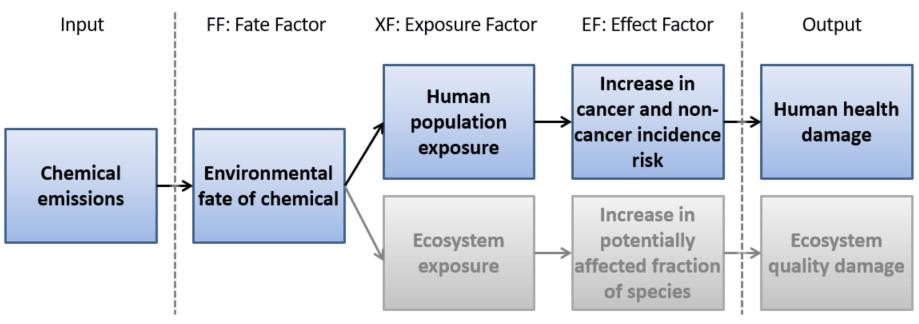Chemicals can be emitted to the environment (air, water, soil, etc.) during all life cycle stages of products, services and systems. Emission inventories of different products may contain hundreds of chemicals, of which many will have the potential to cause toxic impacts on humans, including cancer and various non-cancer effects, leading to damages on human health.
Cause-effect pathway
The impact pathways for human toxicity builds on the combination of an environmental fate factor, a human exposure factor, a human toxicity effect factor, and a toxicity-effect damage factor. The fate factor indicates the distribution and transformation of chemicals in the environment, the exposure factor relates the chemical mass in the environment to human exposure, the effect factor indicates potential human toxicity effects per unit of chemical exposure, and the damage factor finally relates potential effects to damages on human health.
Included are organic chemical substances and metal ions.
 Cause-effect chain for toxicity-related damages on human health (and ecosystem quality) from chemical emissions
Cause-effect chain for toxicity-related damages on human health (and ecosystem quality) from chemical emissions
Modeling approach
Global or (sub-)continental average characterization factors are modeled based on the assumption of linearity between exposure and human population response.
Value choices
To maintain consistency with other impact categories, a time horizon of 100 years is set for the high level of robustness scenarios.
Not all substances with a carcinogenic ED50 are necessarily carcinogenic to humans. The ‘certain impacts’ scenario only includes the substances with strong evidence of carcinogenicity (IARC category 1, 2A and 2B). The ‘all impacts’ scenario includes all substances for which ED50 information is available (IARC category 1, 2A, 2B, 3 or no classification).

